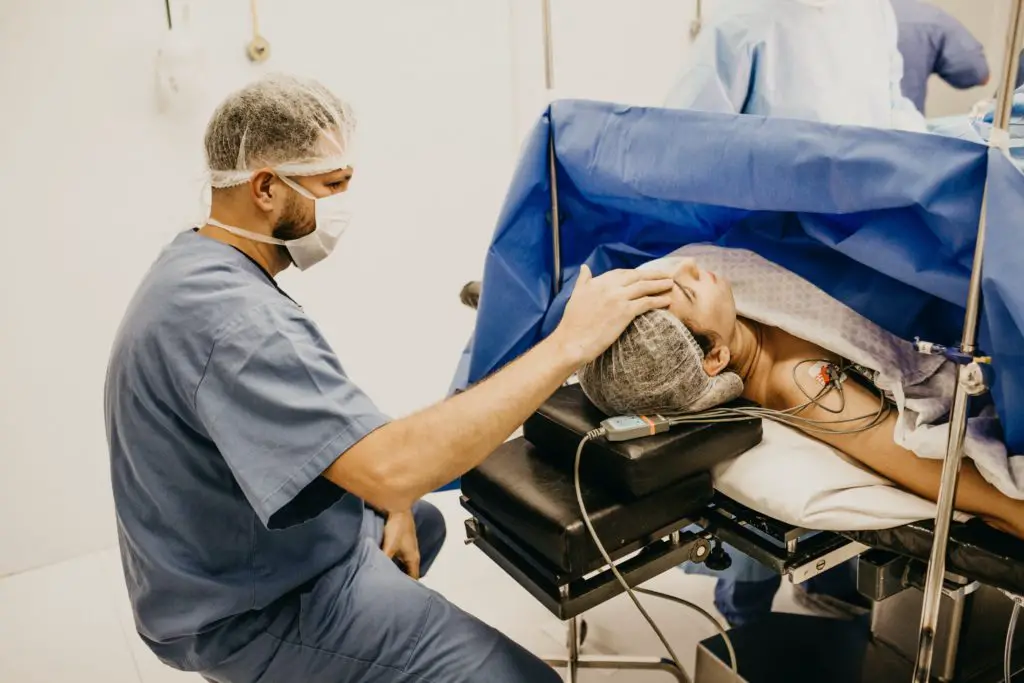Mohs micrographic surgery is a way to treat and cure certain skin cancers. Surgeons trained in the Mohs procedure can do this surgery. It allows skin cancer to be removed with less damage to the healthy skin around it.
Description
Mohs surgery usually takes place in the doctor’s office. The surgery is started early in the morning and is done in one day. Sometimes if the tumour is big or you need reconstruction, it may take two visits.
During the procedure, the surgeon removes the cancer in layers until all the cancer has been removed. The surgeon will:
- Numb your skin where cancer is so you do not feel any pain. You stay awake for the procedure.
- Remove the visible tumour along with a thin layer of tissue next to the tumour.
- Look at the tissue under a microscope.
- Check for cancer. If there is still cancer in that layer, the doctor will take out another layer and look at that under the microscope.
- Keep repeating this procedure until there is no cancer found in a layer. Each round takes about 1 hour. The surgery takes 20 to 30 minutes and looking at the layer under the microscope takes 30 minutes.
- Do about 2 to 3 rounds to get all of cancer. Deep tumours may need more layers.
- Stop any bleeding by applying a pressure dressing, using a small probe to heat the skin (electrocautery), or giving you a stitch.
Why the Procedure is Performed
Mohs surgery can be used for most skin cancers, such as basal cell or squamous cell skin cancers. For many skin cancers, other simpler procedures can be used.
Mohs surgery may be preferred when the skin cancer is on an area where:
- It is important to remove as little tissue as possible, such as the eyelids, nose, ears, lips, or hands
- Your doctor needs to be certain the entire tumour is removed before stitching you up
- There is a scar or prior radiation treatment was used
- There is a higher chance the tumour will come back, such as on the ears, lips, nose, eyelids, or temples
Mohs surgery may also be preferred when:
- The skin cancer was already treated, and it was not completely removed, or it came back
- The skin cancer is large, or the edges of the skin cancer are not clear
- Your immune system is not working well due to cancer, cancer treatments, or medicines you are taking
- The tumour is deeper
Risks
Mohs surgery is generally safe. With Mohs surgery, you do not need to be put asleep (general anesthesia) as you would with other surgeries.
While rare, these are some risks for this surgery:
- Infection.
- Nerve damage that causes numbness or a burning sensation. This usually goes away.
- Larger scars that are raised and red, called keloids.
- Bleeding.
Before the Procedure
Your doctor will explain what you should do to prepare for your surgery. You may be asked to:
- Stop taking certain medicines, such as aspirin or other blood thinners. DO NOT stop taking any prescription medicines unless your doctor tells you to stop.
- Stop smoking.
- Arrange to have someone take you home after your surgery.
After the Procedure
Taking proper care of your wound after surgery will help your skin look its best. Your doctor will talk with you about your options:
- Let a small wound heal itself. Most small wounds heal well on their own.
- Use stitches to close the wound.
- Use skin grafts. The doctor covers the wound using skin from another part of your body.
- Use skin flaps. The doctor covers the wound with the skin next to your wound. Skin near your wound matches in color and texture.
Prognosis
Mohs surgery has a 99% cure rate in treating skin cancer.
With this surgery, the smallest amount of tissue possible is removed. You will have a smaller scar than you might have with other treatment options.
Alternative Names
Skin cancer – Mohs surgery; Basal cell skin cancer – Mohs surgery; Squamous cell skin cancer – Mohs surgery
References
Ad Hoc Task Force, Connolly SM, Baker DR, et al. AAD/ACMS/ASDSA/ASMS 2012 appropriate use criteria for Mohs micrographic surgery: a report of the American Academy of Dermatology, American College of Mohs Surgery, American Society for Dermatologic Surgery Association, and the American Society for Mohs Surgery. J Am Acad Dermatol. 2012;67(4):531-550. PMID: 22959232 www.ncbi.nlm.nih.gov/pubmed/22959232.
American College of Mohs Surgery website. The Mohs step-by-step process. www.skincancermohssurgery.org/about-mohs-surgery/the-mohs-step-by-step-process. Updated March 2, 2017. Accessed December 7, 2018.
Lam C, Vidimos AT. Mohs micrographic surgery. In: Bolognia JL, Schaffer JV, Cerroni L, eds. Dermatology. 4th ed. Philadelphia, PA: Elsevier Saunders; 2018:chap 150.



